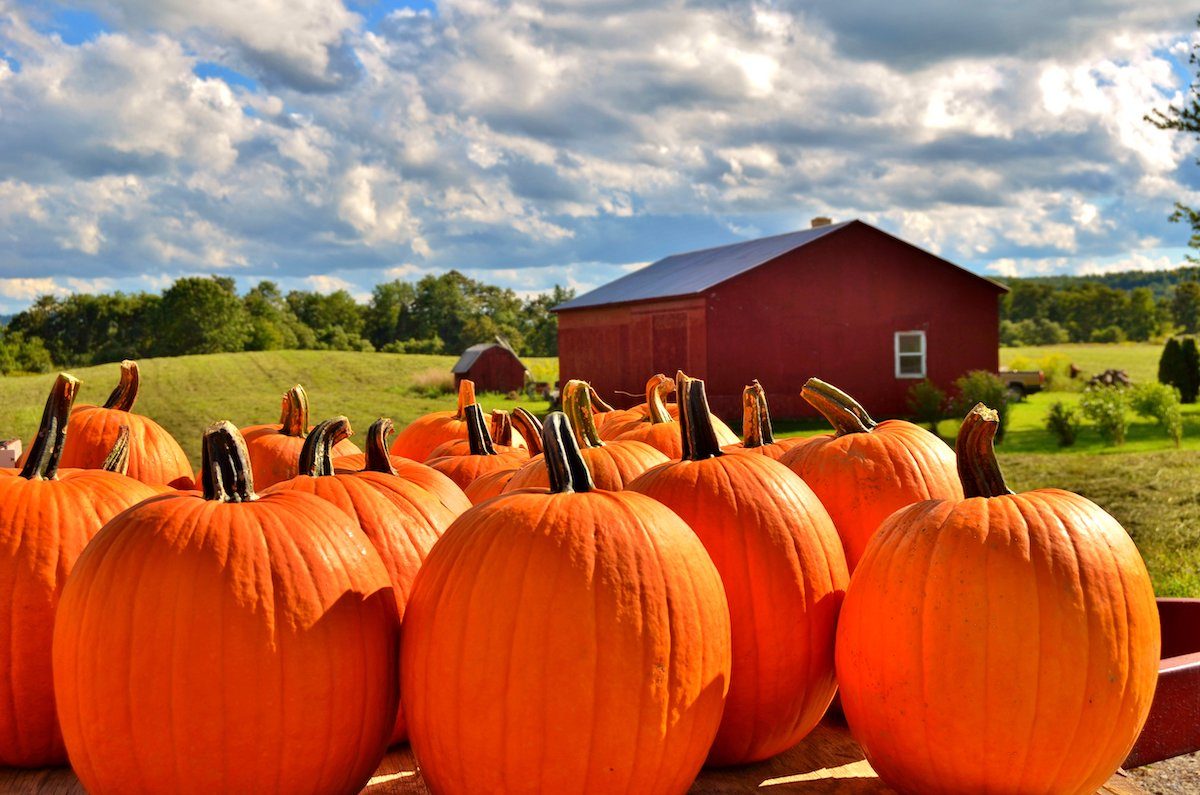Discover which country once used gourds as currency, which Japanese game is played with watermelons, and a wide variety of pumpkin facts.

10 Fun Gourd and Pumpkin Facts

Pumpkins and Halloween go hand-in-hand here in the U.S. and Canada. Put down your pumpkin carving knife and grab a piece of pumpkin bread while you enjoy these fun gourd and pumpkin facts this fall!
On This Page
Pumpkins Are Part of the Winter Squash Family

Winter squashes are usually defined as those harvested later in the season, with tough outer rinds. Summer squash are harvested earlier and have more tender skins, like zucchini. All belong to the genus Cucurbita. In Australia and New Zealand, the word “pumpkin” refers to any type of winter squash, including those like butternut squash and acorn squash. Pumpkins are native to North America, along with all other varieties of squash, but have become a favorite vegetable in many parts of the world.
Like learning about pumpkin facts? You’ll love taking a bite out of fun facts about carrots.
The World’s Largest Pumpkin Weighed 2,749 Pounds
Pumpkins weighing 25 pounds or more are considered giants. However, the world record was set by Travis Gienger at the 50th Safeway World Championship Pumpkin Weigh-Off held in Half Moon Bay, California, in October 2023.
Learn how to turn a gourd into a birdhouse.
The Gourd Family is Plenty Large

If you’d like to grow gourds in your garden, you’ll have plenty of varieties from which to choose. The plant family “Cucurbitaceae,” a.k.a. the gourd family, contains about 975 species. Aside from pumpkins, melons, cucumbers and squashes are part of the group, too. Shared traits include growing quickly and on vines, and sensitivity to temperatures near freezing.
Discover fascinating facts about wild turkeys.
There’s a Unique Japanese Game Involving Gourds
Suikawari is a Japanese tradition in which blindfolded participants use a wooden stick (called a bokken) to try to split a watermelon, which is placed on a covering on the ground. Players have a limited time to complete the challenge, and everyone eats the watermelon afterward. There are “official rules” for the game, but generally, groups are free to play as they wish.
Learn how to recycle pumpkins for birds and wildlife.
Not Every Pumpkin is Good for Pie

Nature has provided us with a variety of pumpkin types, and humans have cultivated and hybridized even more. Pumpkins used for carving are usually larger types like ‘Connecticut Field’ and ‘Howden’. Those used for cooking and baking are smaller varieties known as “sugar pumpkins”, and include ‘New England Pie Pumpkin’ and ‘Baby Pam’.
White pumpkins like ‘Baby Boo’ and ‘Caspar’ are gaining in popularity, too. These pumpkins are white on the outside but retain the bright orange flesh inside, so they make for interesting carved pumpkins.
Gourds Were Once Used as Money
In the early 1800s in Haiti, gourds were temporarily the nation’s official currency. That history is present today—Haiti’s standard coin is called a gourde.
Jack-o’-lanterns Weren’t Originally Made From Pumpkins

The idea of carving fall veggies goes back a long way. Many attribute the first Halloween-style carvings to the Irish, who usually used turnips or beets. When folks from these countries came to America, they found pumpkins worked even better, and started using them as well.
In the mood for pretty pumpkin crafts? Fill a pumpkin with flowers.
Pumpkin is a Very Versatile Food
If the only way you’ve ever had pumpkin is in a pie, you’re missing out! Pumpkin can be stewed, roasted, baked, and even pickled. Roast and season pumpkin seeds for a delicious treat (or offer unsalted, unseasoned s to your backyard birds). And if you can catch them early in the season, fry your pumpkin blossoms for a Southwestern treat.
Here’s how to make a DIY pumpkin bird feeder.
One Gourd Makes for a Particularly Healthy Snack

Cucumbers are more than 95% water, which means they’re relatively low in sodium, calories and saturated fat. One cup of sliced cucumbers contains about 16 calories.
Done looking at pumpkin facts? Stay in the spooky season spirit with creepy crawly spider facts.
Additional reporting by Kaitlin Stainbrook






















